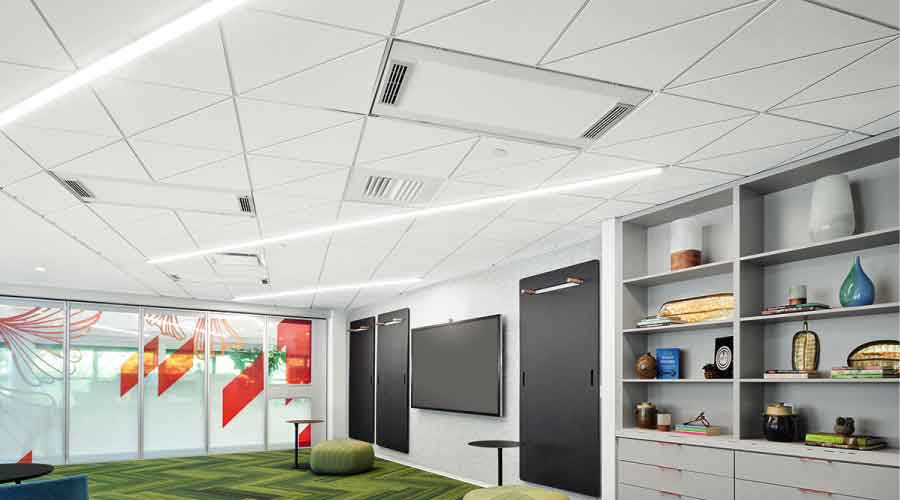
Evaluate Real Facility Change During Zero Emissions Day
Zero Emissions Day is an opportunity to connect the dots between worlds inside and outside buildings September 21, 2022
By Helen Sahi, contributing writer
A few generations ago, unless an institutional or commercial facility visibly released emissions into the atmosphere or pollution into waterways, a building wasn’t on the “hot” list for advocates working toward a healthier, fully sustainable planet. However, thanks to science, we have a deeper understanding of all the influences on global warming. Today, every building, business, infrastructure project and pursuit comprising the built environment is given a role — and a responsibility — in bringing about critical change.
September 21, Zero Emissions Day, offers facility managers an excellent opportunity to look at our new climate reality, then connect the dots between the outside and the inside. We know that climate change affects our outdoor environment, but those same issues — air quality, extreme temperatures, coastal flooding — also increasingly require us to protect our indoor environments. However, in doing so, we must not worsen carbon emissions. Focus needs to be put on new ways to responsibly build and construct the places in which we live, work, learn, heal and play. Steel, lumber and most other construction materials are often a significant source of embodied carbon, which factors in emissions from the manufacturing, transportation, installation, maintenance and disposal of these materials. Although not as noticeable as vehicle emissions, for example, embodied carbon still contributes significantly to our carbon debt.
Repaying the debt
The first step in connecting those dots and embracing a facility empowered for positive environmental change is to assess the specific impacts of building materials and holistically approach the entire value chain in the built environment. There are three key components of this assessment.
- Assessing the carbon impact of building materials. One of the most meaningful ways is via a life cycle assessment (LCA), which provides insight into the impact of products across their lifespan. Materials can then be optimized to mitigate the impact of embodied carbon by improving raw material sourcing, energy and water use, and recycling streams.
- Using an environmental product declaration (EPD). After completing an LCA, the EPD will allow architects, consumers and other stakeholders to compare the environmental impacts of different materials. This transparent communication enables procurement and purchasing functions to make the most sustainable decision for a project.
- Leveraging emerging resources available to support your efforts. Industry groups are developing enhanced tools to help materials manufacturers, builders and designers understand how to best assess the impacts of embodied carbon. For example, Building Transparency has developed the free Embodied Carbon Calculator for construction (EC3) to facilitate easy comparison of embodied carbon emissions from construction materials and products. Ask contractors if they use such tools and if they will share data to enhance your assessment process.
A holistic approach
To best address embodied carbon, we need a holistic perspective that not only considers the construction or operational emissions of a building but also allows for a critical assessment of the emissions of the whole value chain. This includes the manufacturing process as well as the resources and energy it takes to maintain the structure over its life. It also includes the disposal or recycling of materials when the building is demolished. Consider the following key ways you can reduce embodied carbon.
Start at the planning stage — where embodied carbon can be reduced significantly. And the best way to reduce it is to reuse existing structures instead of constructing new ones. Architects and designers should ask themselves, “Can we repurpose an existing structure instead of building a new one?” If they won’t, guide them to do so. This alone can save up to 75 percent in embodied carbon emissions.
Be sure to include building renovations, which can also be a significant contributor to embodied carbon emissions. The interior may go through multiple renovations over the lifetime of the building. These cyclical renovations can, over time, contribute more to the embodied carbon emissions of a building than the actual construction process. For example, ceilings and ceiling tiles take up a large portion of a building’s interior space. Replacing them can result in significant embodied carbon emissions.
Choose low-carbon interior finishes for things like ceilings, and limit carbon-intensive materials in new building or renovation projects. Materials like wood and bamboo, which can sequester carbon over their life cycle, are responsible choices. Also, reusing or salvaging items such as wooden beams, bricks and metals also reduces the energy spent on manufacturing and transporting new products.
This year, consider Zero Emissions Day as your “new leaf” in efforts to reduce carbon footprint, by strategizing to minimize emissions inside and out. By doing so, facilities will be helping to create entire cities and communities that are more sustainable and healthier places to live.
Helen Sahi is a global thought leader in sustainability and strategy with over 30 years of experience leading the technical, operational and strategic aspects of sustainability policy for Fortune 500 businesses. She holds her Bachelor of Science in geology, with a chemistry minor, from Rensselaer Polytechnic Institute and an MBA from University of the People.
Next
Read next on FacilitiesNet












